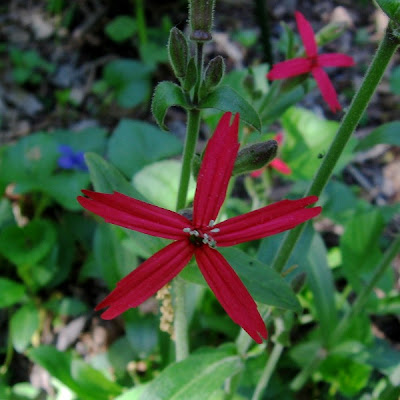Birds and birding news
- Birds that migrate long distances have smaller brains than more sedentary species. The causes are not entirely clear, but it appears that they are conserving as much energy as possible for migratory flights.
- During its courtship flights, a male Common Snipe's tail flaps backwards and forwards like a flag. It is thought that this flapping creates the bird's characteristic drumming sound during displays.
- Tawny Prinias are able to detect the eggs of a Cuckoo Finch, a nest parasite, by their spot pattern. This photo gallery shows how the eggs of the two species compare.
- The Wadden Sea in the Netherlands may become a bottleneck for two knot subspecies due to declining food resources.
- One of the largest known migration roosts for Vaux's Swift is in Los Angeles.
- The Syncrude trial continued in Edmonton this week, with Syncrude complaining that it should not be punished for migratory waterfowl because tailings ponds are vital to bitumen extraction.
- Hornbills play a vital role in tropical Asian forests by eating fruits and dispersing their seeds. Yet the birds are threatened by the exotic pet trade and deforestation.
- The Wetland and Wildfowl Trust is attempting to reintroduce a breeding population of Common Cranes in Great Britain. The first chicks hatched within hours of arriving because the eggs had to be transported by land while flights were canceled due to the volcanic ash cloud.
- Not all homing pigeons are equally adept at finding their way home.
- The Guardian has a guide to help Europeans attract birds to their gardens.
- Birder's World Field of View: Important Bird Areas threatened by Gulf oil spill
- The Drinking Bird: Complete and Utter Disaster
- Birdchick: Red-breasted Nuthatch Nest Construction
- Net Results: Thrush poop research in University faculty paper
- Conservation Maven: Single trees in agricultural systems give big boost to birds and bats
- The Daily Wing: Hybrid Warbler?
- There are indications that the wrecked oil rig may be spilling more oil than even the 5,000 barrels reported in the media. Last night the slick reached the mouth of the Mississippi River. Grist has a slideshow of the drilling rig and the spill, and National Geographic has another gallery. Chances are that most of the oil will not be cleaned up, despite skimming operations. Gulf coast shrimpers are suing. Senator Bill Nelson (D-FL) wants to suspend the Obama administration's plan to expand offshore drilling. Here is a list of the top 10 worst oil spills. See also some thoughts on the Gulf oil spill in the context of another spill.
- Meanwhile, the Interior Department approved the Cape Wind project, which will become the first offshore wind farm in the U.S. Offshore wind farms in Delaware and New Jersey may be next.
- According to new research, there are multiple orca species instead of just one.
- The corn borer survives harvests by moving lower in the cornstalk to build its cocoon.











































